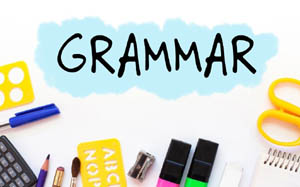 People often make mistakes when using two verbs together. This is because there are a number of different forms that they can take. These are as follows:
People often make mistakes when using two verbs together. This is because there are a number of different forms that they can take. These are as follows:
- –ing
- to + infinitive
- object + to + infinitive
- bare infinitive without 'to'
Verb + ing
There are no golden rules but here is a guide for remembering verbs that are followed by an –ing form.
| Saying and thinking | admit, consider, deny, describe, imagine, mention, suggest |
| Liking and disliking | dislike, enjoy, fancy, (not) mind |
| Phrasal verbs | carry on, give up, keep on, put off, go on |
| Phrases with can’t | can’t bear, can’t help, can’t resist, can’t face, can’t stand |
| Other common verbs | avoid, delay, finish, involve, keep, miss, postpone, practise, risk, justify, regret, stop |
Notes:
Some of the verbs in the list can also be followed by a noun. These include: admit, deny, imagine, suggest, dislike, enjoy, fancy, keep, mind, and practise.
| The man admitted taking a bribe. | and | The man admitted his mistake. |
| What do you fancy doing tonight? | and | I fancy a nice, cold beer. |
We use mind in questions and negative sentences.
| A: Do you mind waiting a moment? |
| B: No, I don’t mind. |
Some verbs and verb phrases have to as a preposition. These include: look forward to, object to, be used to, get used to, and respond to. Prepositions are always followed by the –ing form.
| I am looking forward to seeing you. |
| After a few months, I got used to working with my new boss. |
Verb + to + Infinitive
| Plans and decisions | aim, arrange, choose, decide, intend, plan, prepare |
| Expectations | demand, deserve, expect, hope, want, wish, would like |
| Promises and refusals | fail, guarantee, offer, promise, refuse, threaten |
| Other common verbs | agree, can/can’t afford, learn, manage, pretend, seem, tend, train, wait, appear, ask, attempt, claim, fail, forget, hesitate, neglect. |
Verb + Object + to
These verbs can be followed by an object + to:
| advise | invite |
| allow | order |
| ask | persuade |
| enable | remind |
| encourage | request |
| force | tell |
| help | warn |




